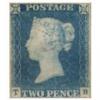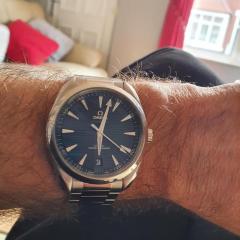Hampden pocket watch 2575591 16s Balance not moving freely (replaced balance staff)
-
Recently Browsing
- No registered users viewing this page.
-
Topics
-
Posts
-
By Neverenoughwatches · Posted
Oh and this almost perfect third wheel pivot and slightly set mainspring Ah ok yes i see what you mean, good idea. I'll try that if i fluff this one up. The image isn't great quality but i like the idea though. -
By RichardHarris123 · Posted
Why cut the paper, cut a square around the image and grind to it. -
By Neverenoughwatches · Posted
I did try that last time Rich , i traced the image from the Bestfit book which is the actual size. But its more difficut to cut the shape from paper than it is to grind the steel to shape. This way is pretty easy and the final shaping is done when fitting the part. There are a couple of things i will do differently next time, clamping the 2 pieces together with a drill press will help to hold while scribing the shape in. This was a bit tricky having only one hole, if using the pins and cork the drill size needs to match the pin diameter so there is no movement at all from the template. This movement hasn't finished frying me yet, damaged thread in the plate crown wheel hole and two rubbed in cracked jewels, thats gonna be much more fun. -
By Neverenoughwatches · Posted
👍 Whats not to follow OH ? You're every inch a pro and a true gent, i always enjoy reading your answers even some of the clock stuff that i dont have a clue about. -
By RichardHarris123 · Posted
Could you print the image either enlarged or reduced to the same size as the actual part and then glue it to the steel.
-









Recommended Posts
Join the conversation
You can post now and register later. If you have an account, sign in now to post with your account.
Note: Your post will require moderator approval before it will be visible.